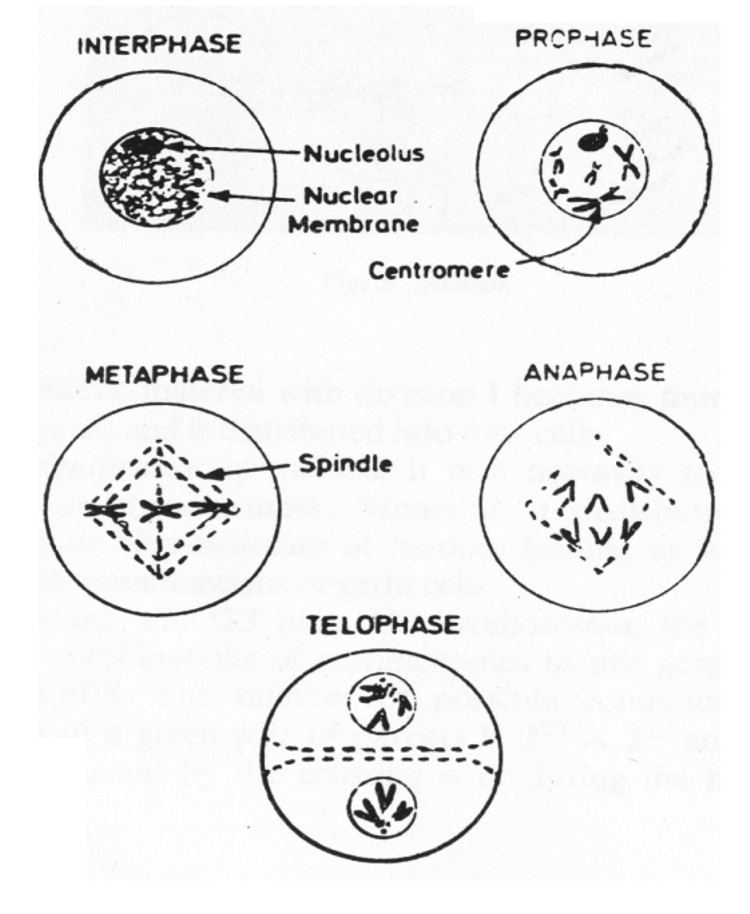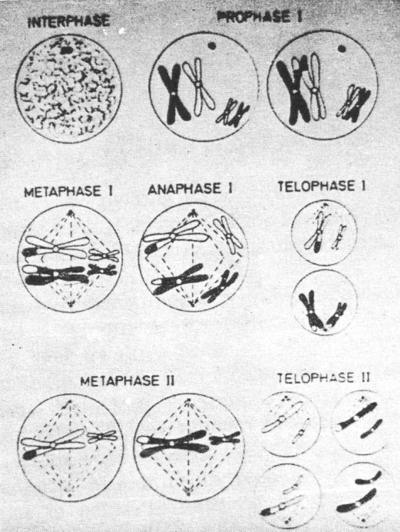(b) Meosis
Fig.11b: Mitosis
1
Interphase
Where DNA has duplicated, chromatin material condenses.
2
Prophase
Chromosomes seen as coils. Nuclear membrane and nucleolus disappear. The sister chromatids lie side by side.
3
Metaphase
Chromosomes appear as rod like bodies with the centromere arranged on the equatorial plate attached by two spindle poles.
4
Anaphase
Disjunction occurs, each chromatid is pulled to poles.
5 Telophase
Chromatids decendensed spindle fibres disintegrate. The nuclear membrane forms and cell division begins.
With the usual type of cell division or mitosis the number of chromosomes in daughter cells remain constant.
Fig.12: Meiosis
1
Prophase-I
Chromosome threads visible (leptotene) homologous chromosomes from mother and father pair (zygotene). When paining is complete, chromosomes shorten by contraction (pachytene). A logitudinal cleft can be seen in each pair of chromosome. Thus, four chromotids of each kind are seen side by side (diplotene). Then the non-sister chromotides separate, while sister chromotides remain paired, chromotin crossing between non-sister chromotids can be seen.
2
Metaphse-I
As the centromeres are drawn to poles chromosomes arrange on the metaphase plane.
3
Anaphase-I
Paired chromosomes separate and migrate to apposite poles. Daughter nuclei are formed.
The genetic material with division-I become four fold (2 x 2 homologous) and is distributed into four cells.
(c) Significance of Meosis
It is necessary to reduce the number of chromosomes. Secondly it distributes the non homologous chromosomes at random leading to large number of possible combinations of germ cells. In human with 23 pairs chromosomes the number of possible combinations of chromosomes in one germ cell is 223 = 83, 88, 608. The number of possible combination in offspring of a given pair of parents is 223 x 223 and is further highly enhanced by cossing over during the homologous paining.[132]
 Prof. Dr. Sohan Raj Tater
Prof. Dr. Sohan Raj Tater


 Doctoral Thesis, JVBU
Doctoral Thesis, JVBU